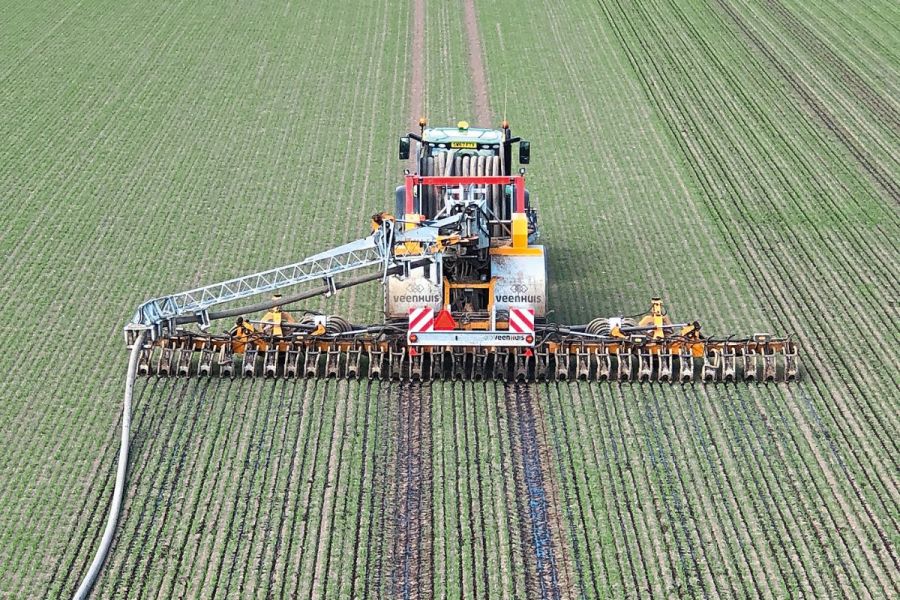Since installing an anaerobic digester in 2006, Gask Farm has been using digestate to meet around 80% of its arable cropping nitrogen demands. And for the past five years it has been operating a Veenhuis Rotamax to apply the slurry.
One of the attractions for Gask Farm installing the first AD plant in Scotland was that the digestate could be used to meet a lot of the nutritional needs of the combinable crops grown on the 485ha enterprise in Turriff, Aberdeenshire. But how that organic fertiliser is applied has evolved over the years. And for the past five seasons a Veenhuis Rotomax umbilical system has been used for all of the liquid application.
Up until two years ago the farm had its own pig unit, so dealing with the slurry was not a new experience. Abattoir waste was also being applied to land, but Andrew Rennie points out that at the time they could see the writing on the wall for applying the effluent and belly grass directly to land with changes in legislation. Blending the two products with the pig slurry as the feedstock would be the ideal alternative treatment that could be then used on site. With the ball rolling the 600kW anaerobic digester was commissioned, and the creatively named BioGask part of the business was created.
“There is not that much energy in pig slurry as it is used by the pig, so it was just more liquid to deal with,” explains Andrew about the decision to exit the swine side of the business. “We’re now using food baking waste, and waste products from the fish factories nearby and the abattoir.”
Less traffic
The digestate was initially applied by tankers fitted with a boom carrying multiple splash plates to achieve a working width of 24m, helping it match in with the tramlines for spraying and fertiliser spreading.
For more up-to-date farming news and reviews click here and subscribe now to profi for just £3.99 an issue.





